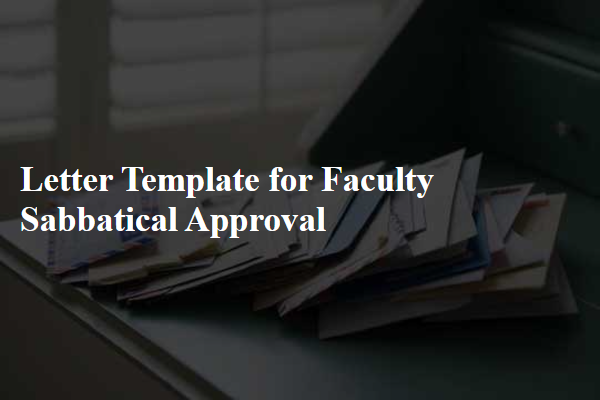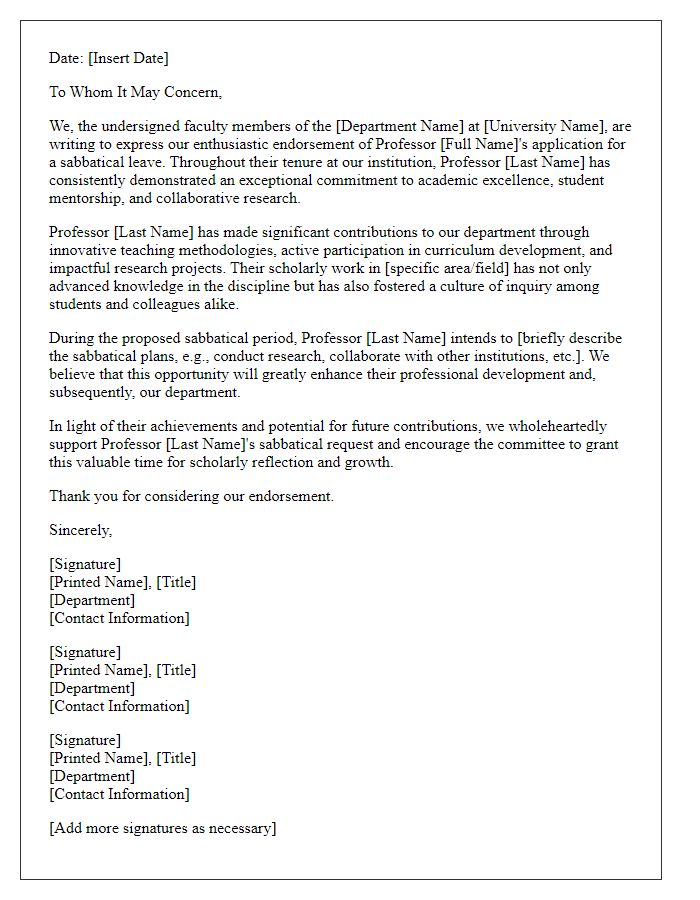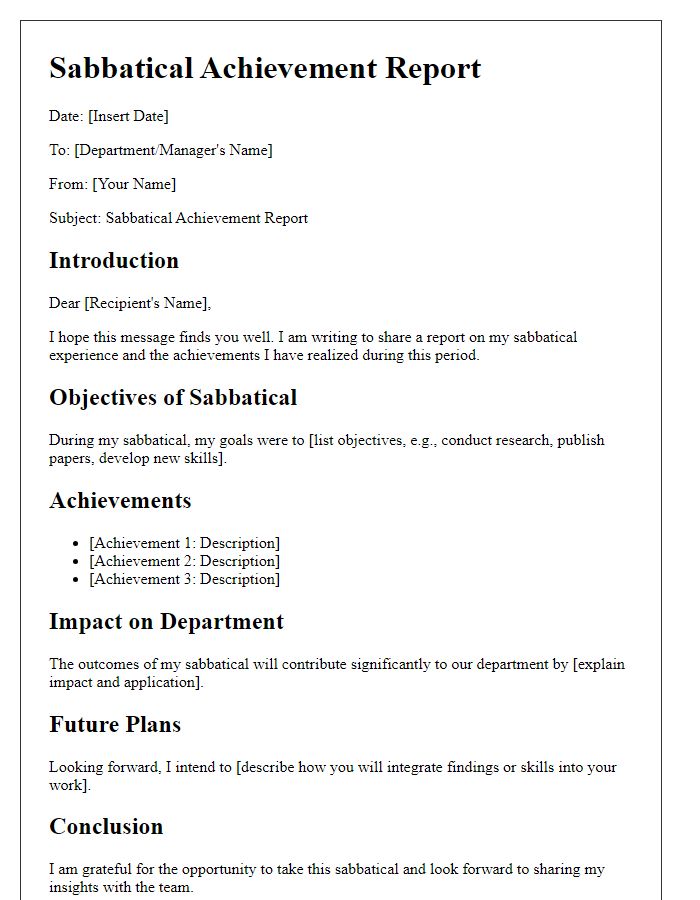Are you looking to take your teaching and research to the next level? A faculty sabbatical can provide you with the much-needed time and space to recharge, explore new ideas, and engage in professional development. This article will guide you through crafting a compelling letter to request sabbatical approval, ensuring you communicate your intentions effectively and align with institutional expectations. Join us as we delve deeper into the essential elements of a successful sabbatical approval letter.

Sabbatical purpose and goals
A faculty sabbatical serves as an essential opportunity for academic professionals to engage in research, enhance pedagogical methods, and contribute to the scholarly community. The primary purpose of a sabbatical typically revolves around pursuing specialized research in fields such as sociology, history, or environmental science, fostering deeper knowledge and innovative practices. Goals may include publishing articles in renowned academic journals, collaborating with industry experts, or participating in conferences like the American Educational Research Association (AERA) Annual Meeting. By immersing themselves in academic networks and gaining hands-on experience, faculty members aim to enrich course content, improve student engagement, and ultimately advance their department's reputation at institutions like Ivy League universities or liberal arts colleges.
Duration and timeline
A faculty sabbatical is a planned break from regular teaching duties, typically lasting one academic semester or a full academic year. The duration of this sabbatical aims for professional development, research undertakings, or obtaining further qualifications. Commonly, a one-semester sabbatical occurs during fall or spring, while an annual sabbatical may correspond with academic calendars, often aligning with the institution's break periods. Faculty members must submit their complete proposal, which includes the timeline, at least six months prior to the intended start date, allowing department heads and committees sufficient time for review and approval processes, ensuring that curriculum continuity is maintained. Institutions usually require a detailed plan outlining proposed activities, expected outcomes, and any collaborative efforts with other scholars or institutions during this period.
Proposed research or projects
The proposed faculty sabbatical approval seeks to explore the intricate relationship between climate change and agricultural productivity in the Midwest region of the United States, specifically focusing on Iowa and Illinois. This research aims to analyze historical climate data (last 50 years) from the National Oceanic and Atmospheric Administration (NOAA) and agricultural yield reports from the USDA. Key objectives include investigating the impact of shifting precipitation patterns and rising temperatures on crop yields like corn and soybeans, as these are critical to the economy and food supply. The project envisions collaboration with local universities and agricultural extension offices, which can provide valuable insights and assist in data collection. Anticipated outcomes include peer-reviewed publications and community engagement seminars to disseminate findings.
Institutional benefits
A faculty member's sabbatical offers invaluable benefits to educational institutions, fostering academic growth, revitalizing teaching methods, and enhancing research capabilities. During this designated leave, faculty members pursue projects related to their expertise, often leading to innovative practices that can be integrated into curriculum development. Collaborative research initiatives may result in significant publications or presentations at esteemed conferences, elevating the institution's reputation. Engagement with external organizations such as think tanks or industry partners often enhances the faculty member's professional network, bringing potential partnerships and funding opportunities to the institution. The infusion of fresh ideas and perspectives from various academic fields during sabbaticals can stimulate a culture of continuous improvement, ultimately benefiting both faculty and students in achieving academic excellence.
Professional development and growth
A faculty sabbatical, typically lasting one semester or an academic year, provides educators an opportunity for professional development and growth in their respective fields. Faculty members can engage in research, attend educational conferences, or collaborate with other institutions, enhancing their academic expertise. The benefits of sabbaticals extend beyond the individual; they enrich the academic community by incorporating new knowledge and innovative practices into the curriculum at universities, such as the University of California or Harvard University. Additionally, professional development activities may include specialized training workshops, which can lead to advancements in teaching methodologies. Growth achieved during sabbaticals can significantly contribute to higher student engagement and improved educational outcomes across various programs.
Letter Template For Faculty Sabbatical Approval Samples
Letter template of sabbatical leave justification for academic committee

Letter template of sabbatical intention for collaborative research project

Letter template of faculty sabbatical notification for administrative purposes











Comments